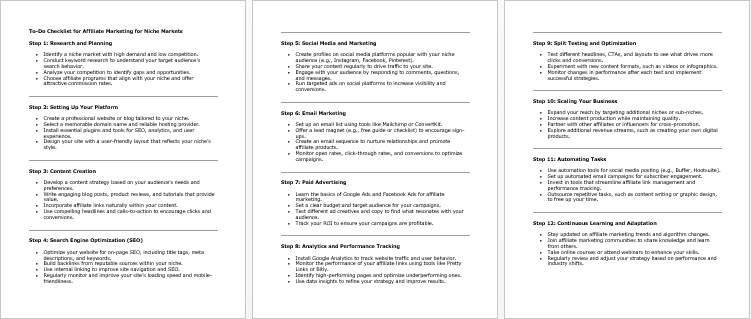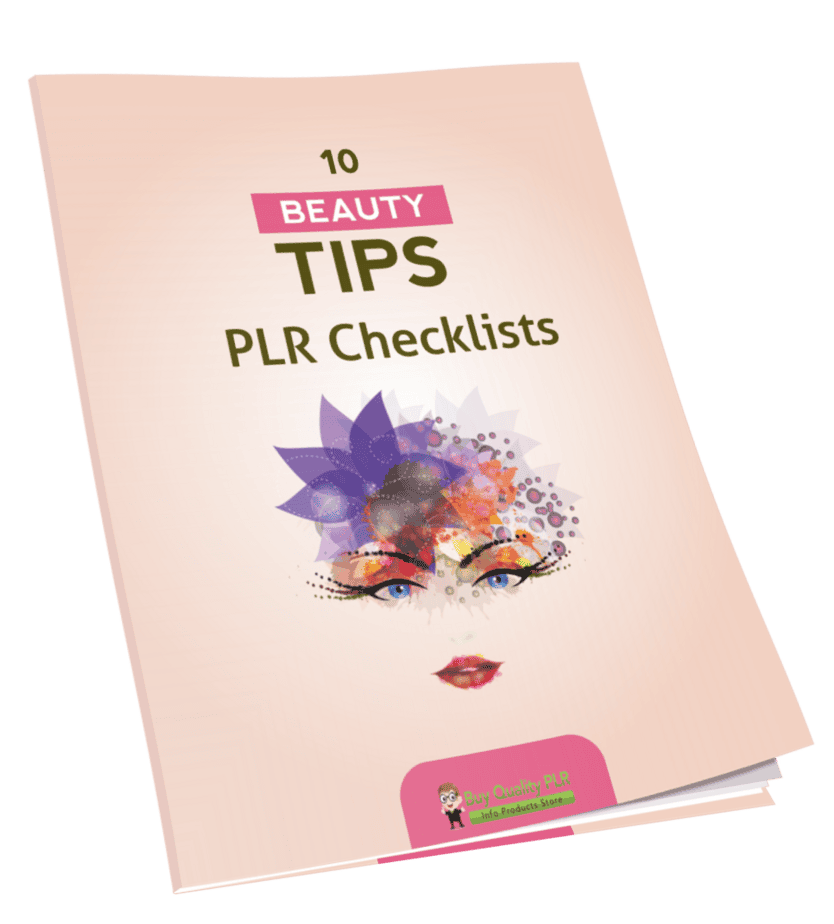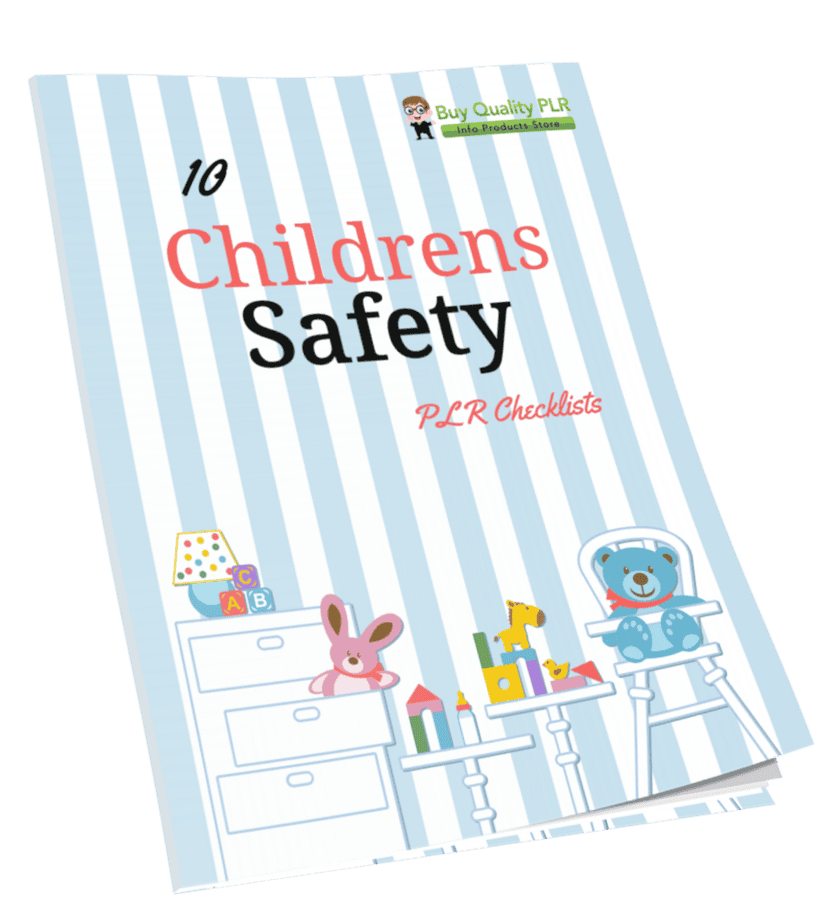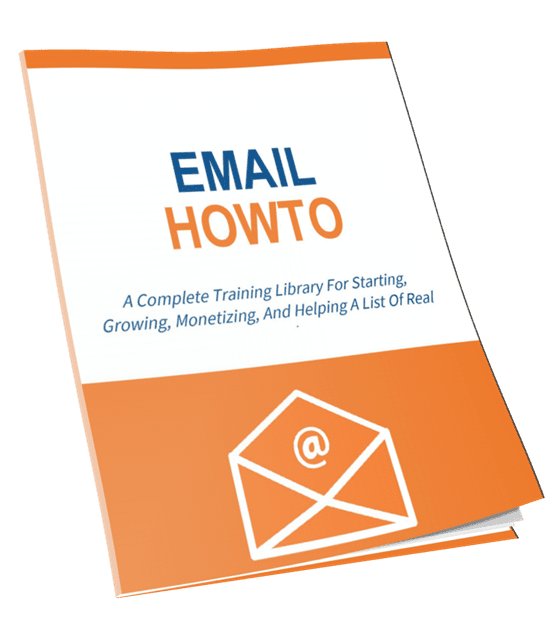
Affiliate Marketing for Niche Markets PLR Course 33k Words
in Affiliate Marketing PLR , Affiliate Marketing PLR eBooks , Internet Marketing PLR , Internet Marketing PLR eBooks , Marketing PLR , PLR Checklists , PLR eBooks , PLR eCourses , PLR List Building Reports , Premium PLR , Premium PLR Reports , Premium White Label Brandable PLR Coaching Courses , Private Label Rights ProductsChoose Your Desired Option(s)
has been added to your cart!
have been added to your cart!
#affiliatemarketing #nichemarketing #digitalincome #plrcourse #marketingsuccess #affiliatestrategies #onlinebusiness #passiveincome #contentcreation
Unlock the Power of Niche Marketing with Our Comprehensive Affiliate Marketing PLR Course!
Are you ready to dive into the lucrative world of affiliate marketing but don’t know where to start? Or are you looking to refine your strategies and maximize your earnings? Look no further! The Affiliate Marketing for Niche Markets PLR Course is your step-by-step guide to building a profitable affiliate business tailored to niche markets.
This course is packed with actionable insights, expert tips, and proven strategies to help you thrive in the competitive affiliate marketing space. Whether you’re a beginner or an experienced marketer, this course has everything you need to succeed.
Presenting…
Affiliate Marketing for Niche Markets 33k Words
What’s Inside the Course?
Module 1: Understanding Affiliate Marketing & Niche Selection
- What is Affiliate Marketing?
Learn the fundamentals of affiliate marketing and why it’s one of the best online business models. - Why Niche Markets?
Discover how focusing on specific niches can lead to higher conversions and more loyal audiences. - Identifying Profitable Niches:
Uncover tools and techniques to find high-demand, low-competition niches. - Defining Your Audience:
Master the art of understanding your audience’s needs and preferences to create content that converts.
Module 2: Finding the Right Affiliate Programs
- Understanding Affiliate Networks:
Explore the top affiliate networks and find the right fit for your niche. - Choosing High-Quality Products:
Learn to evaluate and promote products that resonate with your audience. - Commission Structures & Payouts:
Decode commission types and pick programs with the best earning potential. - Building Relationships with Affiliate Managers:
Gain insider tips on negotiating deals and boosting your commissions.
Module 3: Creating Your Affiliate Marketing Website
- Selecting a Platform:
Set up a professional website using platforms like WordPress. - Designing for Conversions:
Optimize your site layout to encourage clicks and sales. - Content Creation for Your Niche:
Craft engaging blogs, reviews, and tutorials that establish your authority. - Setting Up Affiliate Links:
Learn best practices for integrating affiliate links seamlessly into your content.
Module 4: Driving Traffic to Your Affiliate Website
- Search Engine Optimization (SEO):
Get found on Google with on-page and off-page SEO strategies. - Leveraging Social Media:
Harness the power of Instagram, Facebook, and Pinterest to attract your niche audience. - Paid Advertising for Affiliates:
Accelerate your results with Google Ads and social media campaigns. - Email Marketing & List Building:
Build a loyal subscriber base and drive consistent conversions through targeted email campaigns.
Module 5: Optimizing & Scaling Your Affiliate Marketing Efforts
- Analyzing Traffic & Conversions:
Use tools like Google Analytics to refine your strategies. - Split Testing & Optimization:
Test headlines, CTAs, and layouts to maximize performance. - Scaling Your Business:
Expand your reach with additional niches, products, and traffic sources. - Automating Your Marketing:
Save time with tools and systems that keep your business running smoothly.
Why Choose This Course?
- Comprehensive Content:
With over 31,000 words, this course covers everything you need to know about affiliate marketing for niche markets. - Actionable Strategies:
Step-by-step guidance ensures you can start implementing strategies right away. - Perfect for Beginners and Experts:
Whether you’re starting fresh or looking to scale, this course is designed for all experience levels. - Customizable Content:
Use the PLR content as-is, or edit and rebrand it to suit your audience.
What’s Included?
- Affiliate Marketing for Niche Markets – Checklist:
A quick reference guide to keep you on track. - FAQs Document:
Address common questions and concerns to make the learning process seamless. - Ready-Made Sales Page:
Use our professionally written sales page to start promoting the course immediately.
How You Can Profit from This Course
- Sell It as a Premium Course:
Price it at $47-$97 as a standalone product and watch your sales grow. - Bundle It with Other Products:
Combine it with additional marketing courses to increase value. - Offer It as a Membership Perk:
Add it to your membership site to attract and retain subscribers. - Use It as a Lead Magnet:
Offer excerpts as free downloads to grow your email list. - Repurpose It for Content Creation:
Break it into smaller pieces for blog posts, social media content, or eBooks.
Who Is This Course For?
- Bloggers: Learn how to monetize your blog with niche-focused affiliate products.
- Content Creators: Build an additional revenue stream by promoting products that align with your audience.
- Entrepreneurs: Use affiliate marketing to diversify your income streams.
- Digital Marketers: Enhance your skills and help clients achieve their marketing goals.
Special Offer: Only $14.99
For a limited time, get the Affiliate Marketing for Niche Markets PLR Course for just $14.99. This is your chance to access a high-quality course and start your journey toward affiliate marketing success.
has been added to your cart!
have been added to your cart!
Here A Sample of Affiliate Marketing for Niche Markets PLR Course
Welcome to “Affiliate Marketing for Niche Markets”! This course is designed to guide you step by step through the process of establishing a successful affiliate marketing business, with a focus on finding and thriving in niche markets. By the end of this course, you will have the tools and knowledge to select your niche, partner with the right affiliates, and create profitable campaigns. Let’s dive in!
Module 1: Understanding Affiliate Marketing & Niche Selection
Step 1: What is Affiliate Marketing?
Affiliate marketing is a powerful online business model that allows individuals to earn money by promoting products or services created by others. As an affiliate marketer, your goal is to drive traffic to a product or service provider’s website using special referral links. When someone purchases a product or completes a specific action (such as signing up for a newsletter, registering for a service, or making a purchase) through your referral link, you earn a commission.
This model works on a performance-based system, meaning you only get paid when a conversion (sale, lead, or action) occurs. There’s no need for you to create products, manage inventory, or deal with customer service, making affiliate marketing an attractive and flexible option for anyone looking to build an online income.
Let’s break down the affiliate marketing model in detail:
1. Understanding the Affiliate Marketing Process
The process of affiliate marketing typically involves four key players:
1.1 The Merchant (Product Creator or Service Provider)
The merchant is the company or individual who creates a product or service that they want to sell. This can be a large corporation or a smaller, independent creator. Examples include companies like Amazon, ClickBank, or independent course creators who need affiliates to help promote and sell their products. Merchants benefit by having affiliates promote their offerings to a broader audience, helping them increase their sales and reach.
1.2 The Affiliate (You!)
As the affiliate, you promote the merchant’s product or service to your audience. You do this through various channels such as blogs, websites, social media platforms, YouTube, or email marketing. Your goal is to drive targeted traffic to the merchant’s site, with the ultimate aim of persuading your audience to make a purchase or take another desired action.
1.3 The Consumer (Buyer or Action Taker)
The consumer is the person who clicks on your affiliate link and makes a purchase, registers for a service, or performs another desired action. It’s important to attract the right consumers who are genuinely interested in the product or service you’re promoting. Your marketing efforts should focus on solving their problems or fulfilling their needs, which leads to a higher likelihood of conversion.
1.4 The Affiliate Network (Optional but Helpful)
In some cases, an affiliate network acts as an intermediary between merchants and affiliates. The network provides a platform where merchants can list their affiliate programs and where affiliates can find offers to promote. Examples of affiliate networks include ShareASale, Rakuten, and Commission Junction. These networks help streamline tracking, payment processing, and reporting for both merchants and affiliates.
2. How Does Affiliate Marketing Work?
Affiliate marketing is fundamentally a simple process, but it’s built on trust and proven marketing strategies. Here’s how it works step by step:
2.1 Joining an Affiliate Program
To get started, you need to join an affiliate program. There are thousands of affiliate programs available, ranging from large global platforms like Amazon Associates to niche-specific programs. After signing up for an affiliate program, you’ll receive a unique affiliate link. This link contains tracking codes that are used to identify you as the referrer.
2.2 Promoting Products or Services
Once you have your affiliate links, the next step is promotion. You’ll embed these links in your website, blog posts, social media platforms, or email campaigns. The key here is to create content that naturally leads your audience to click on your affiliate link. This could be through in-depth product reviews, comparison articles, how-to guides, or other types of content that align with the needs and interests of your audience.
The more effectively you promote the product, the more likely your audience will trust your recommendations and be motivated to click on your link.
2.3 The Referral Action
When a consumer clicks on your affiliate link, they are taken to the merchant’s website. The affiliate link tracks their activity on the site. If they make a purchase or complete an action (such as filling out a contact form or signing up for a service), you, the affiliate, are credited with the sale or action.
It’s important to note that the tracking process is automatic and happens in real-time. This means you don’t have to manually report sales or actions to the merchant. The affiliate program automatically tracks clicks and conversions through cookies—small pieces of data that store information about the user’s visit.
2.4 Earning a Commission
Once the consumer completes a purchase or action, you earn a commission based on the agreement you have with the merchant. The commission can vary widely depending on the product or service. For example:
- Pay-per-sale (PPS): You earn a percentage of the sale price (typically between 5%-50%, depending on the affiliate program).
- Pay-per-click (PPC): You get paid when someone clicks on your affiliate link, regardless of whether they make a purchase.
- Pay-per-lead (PPL): You earn a commission when someone signs up or takes a specific action, such as filling out a form or subscribing to a service.
The amount you earn will depend on the terms of the affiliate program, the product’s price, and the number of successful conversions.
3. Why Affiliate Marketing Is an Excellent Way to Build an Online Income
Affiliate marketing has become a popular way for individuals to create a sustainable online income due to its many benefits. Here’s why it’s such an excellent choice:
3.1 Low Start-Up Costs
Unlike creating your own product or service, affiliate marketing has very low barriers to entry. You don’t need to invest in product development, manufacturing, inventory management, or shipping. All you need is a platform (like a website or social media presence) to promote the products.
3.2 No Need to Handle Customer Service
As an affiliate marketer, you don’t need to worry about dealing with customer support. The merchant takes care of all customer service, product returns, and any issues with orders. This allows you to focus entirely on marketing.
3.3 Flexible and Scalable
Affiliate marketing is incredibly flexible. You can work from anywhere in the world, set your own hours, and work at your own pace. You can start as a part-time affiliate marketer and, over time, scale your efforts to turn affiliate marketing into a full-time business.
Affiliate marketing can be scaled by diversifying your promotional channels, reaching new audiences, and adding more affiliate offers to your portfolio. You can also target different niches or expand into related products and services.
3.4 Passive Income Potential
One of the greatest advantages of affiliate marketing is its potential for passive income. Once your content is published and optimized, it can continue to generate traffic and affiliate commissions without much ongoing effort. For example, blog posts, video tutorials, and email campaigns can work for you around the clock, generating income even while you sleep.
3.5 Performance-Based Earnings
Affiliate marketing is performance-driven. This means that the more effort you put into your marketing strategies, the higher the potential for income. Unlike salaried positions, where your pay is fixed, affiliate marketing allows you to scale your earnings based on your results. If you can attract a larger audience or improve your conversion rates, your income can grow significantly.
4. Conclusion: Why Affiliate Marketing Works for International Course Creators
For course creators looking to build an online business or diversify their income streams, affiliate marketing is a fantastic option. By partnering with companies that offer complementary products to your course, you can increase your earning potential without additional product development.
Affiliate marketing can be particularly advantageous for international course creators because it allows you to tap into global markets, promoting products and services to audiences in different countries. By leveraging the affiliate marketing model, you can create a passive income stream while focusing on what you do best—creating valuable courses for your learners.
In the next steps, we’ll show you how to find the best affiliate programs for your niche and how to start promoting them to your audience!
Step 2: Why Niche Markets?
In the vast world of affiliate marketing, choosing the right market to target is crucial for success. One of the most effective strategies is to focus on niche markets—smaller, more specific audiences with unique needs. By narrowing your focus to a particular niche, you can create highly targeted marketing campaigns that resonate with your audience, leading to higher conversion rates and a more engaged following.
In this step, we will explore what niche markets are, why they are important, and how focusing on a niche can give you a competitive edge in affiliate marketing. As an international course creator, understanding niche markets is vital because it allows you to connect with the right people, improve your content’s relevance, and ultimately boost your affiliate marketing success.
1. Understanding Niche Markets
A niche market is a specific segment of the larger market, often characterized by a unique set of interests, needs, and preferences. These segments are typically smaller than mass markets, but they are highly focused and have specific demands. By targeting a niche, you are essentially catering to a specific group of people who are likely to be highly interested in your offerings because the product or service solves a particular problem they face.
1.1 Characteristics of Niche Markets
- Specific Interests: The audience has a well-defined, narrow focus that distinguishes them from the broader population. For example, instead of targeting all individuals interested in fitness, you could focus on yoga for seniors or keto diets for women over 40.
- Defined Needs: Niche markets have unique needs that are often unmet by larger, general-market products. By addressing these unmet needs, you create a stronger connection with your audience.
- Loyal Community: Niche markets are often made up of people who are passionate about the subject matter. This can translate into a highly loyal and engaged audience that values specialized information, products, and services.
1.2 Examples of Niche Markets
Here are a few examples of niche markets you could target as an affiliate marketer:
- Pet Care for Exotic Animals: Instead of promoting general pet care products, focus on niche products for exotic pets such as reptiles, birds, or fish.
- Sustainable Travel for Eco-Conscious Tourists: Market eco-friendly travel options, sustainable hotels, and eco-tours for travelers who prioritize environmental impact.
- Vegan Beauty Products: A niche for beauty products that cater specifically to people who follow a vegan lifestyle.
- Remote Work Tools for Digital Nomads: Focus on tools and products that help individuals work remotely, such as productivity apps, portable tech, and co-working spaces.
As you can see, niche markets can be as diverse as the interests of individuals worldwide. The key is to find a niche that aligns with your expertise, passions, and the needs of your target audience.
2. Why Niche Markets are Important in Affiliate Marketing
Focusing on niche markets can significantly improve your affiliate marketing efforts. While targeting broad markets may seem attractive due to their larger audience size, niche markets offer distinct advantages that can make your affiliate marketing business more effective and profitable.
2.1 More Targeted Campaigns
In mass-market advertising, businesses have to appeal to a wide range of interests and needs, which can dilute the effectiveness of their message. On the other hand, when you target a niche market, you can tailor your content and campaigns specifically to the interests and concerns of that group.
- Higher Relevance: By focusing on a niche, your content will be more relevant to the specific audience you’re targeting. This makes it easier to create compelling product reviews, blog posts, videos, or social media content that resonate deeply with your audience.
- Personalized Marketing: With niche marketing, you can create more personalized, engaging marketing campaigns that speak directly to the pain points and desires of your audience.
2.2 Higher Conversion Rates
Conversion rates are crucial in affiliate marketing because they determine how many of your referrals actually make a purchase. In general, niche marketing leads to higher conversion rates because you’re promoting products or services that are specifically tailored to the needs of your audience.
- Trust and Authority: When you focus on a niche, your audience is more likely to trust your expertise in that area. This trust can drive them to take action, such as clicking on your affiliate links and making a purchase.
- Focused Messaging: With niche marketing, your messages are more likely to hit the mark because you’re not trying to appeal to everyone. The more closely aligned your offer is with the audience’s needs, the higher the chance they will convert.
For example, imagine you are a course creator offering an online course about digital marketing for small businesses. If you target the broader small business market, your messages may feel too generic, and it may be hard to capture the attention of your audience. However, if you narrow your focus to digital marketing for small businesses in the health and wellness industry, you will speak directly to the needs of that specific group, making your offers much more compelling.
2.3 Increased Engagement and Community Building
One of the major benefits of targeting a niche market is the opportunity to build a strong, loyal community. Niche markets are often comprised of people who are passionate about the subject matter. This passion leads to more active participation and engagement.
- Stronger Connections: Niche audiences often engage with content more deeply because they feel understood and represented. As an affiliate marketer, this means higher engagement with your posts, more comments, likes, and shares on social media, and increased email open rates.
- Building Relationships: The more engaged your audience is, the more likely they are to return to your content, trust your recommendations, and make purchases through your affiliate links. Building a relationship with your audience allows you to nurture a loyal community that values your insights and product recommendations.
For example, if you focus on the niche of mindfulness for busy professionals, your content will speak directly to individuals who are looking for ways to manage stress in their hectic lives. This audience is more likely to engage with your content, subscribe to your email list, and purchase products related to mindfulness, meditation, or stress management.
2.4 Lower Competition and Less Market Saturation
The broader a market, the more competition there is for the attention of consumers. On the other hand, niche markets are often less competitive, allowing you to stand out more easily.
- Less Noise: When you target a niche, there is less “noise” from other marketers trying to sell to the same audience. Your message has a better chance of being heard because you’re not competing against countless general-interest products and services.
- Opportunities for Differentiation: Because niche markets are smaller, you have the opportunity to differentiate yourself more effectively. Your unique angle, whether it’s through your content, expertise, or personal brand, will stand out to your audience in a way that’s harder to do in a highly saturated market.
2.5 Better Affinity with Products
By focusing on a niche market, you can also partner with affiliate programs that align more closely with your audience’s interests. This allows you to promote products or services that your audience is genuinely interested in, leading to better sales and customer satisfaction.
For instance, as an international course creator, if you focus on online learning platforms or e-learning tools, the products you’re promoting will directly appeal to your audience, who are likely to be individuals seeking educational resources. This alignment ensures that your affiliate recommendations will be highly relevant and valuable to them.
3. How to Identify the Right Niche for Affiliate Marketing
As an international course creator, choosing the right niche is critical for your success in affiliate marketing. Here are some practical steps to help you identify the best niche for your business:
3.1 Assess Your Interests and Expertise
Start by considering your own interests, passions, and expertise. As a course creator, you already have a wealth of knowledge to share, so think about areas where you can create authentic and engaging content. By aligning your niche with your expertise, you can offer valuable insights and build credibility.
3.2 Research Market Demand
Once you have an idea of potential niches, conduct research to ensure there is demand for the products or services you want to promote. Use tools like Google Trends, Keyword Planner, or social media groups to assess the level of interest in the niche.
3.3 Understand Your Target Audience
To succeed in affiliate marketing, you must deeply understand your target audience’s needs, pain points, and preferences. Conduct surveys, read industry reports, and explore online forums to get to know your audience better.
3.4 Look for Profitability
While niche markets are focused on specific interests, they should still have the potential to generate income. Research affiliate programs that offer competitive commissions and ensure the products align with your audience’s needs.
4. Conclusion: The Power of Niche Marketing for Course Creators
Niche markets offer a powerful opportunity for course creators to build a focused, successful affiliate marketing strategy. By narrowing your target audience, you can create highly relevant content, improve your conversion rates, and engage with a loyal community. The specificity of niche markets allows you to stand out in a crowded marketplace and build deeper relationships with your audience. By choosing the right niche, you can make affiliate marketing a profitable and sustainable business model for the long term.
In the next step, we’ll explore how to find the best affiliate programs within your niche and start promoting them effectively to maximize your earnings.
Step 3: Identifying Profitable Niches
Now that you have a clear understanding of what a niche is and why it’s vital to your affiliate marketing success, it’s time to identify a niche that’s not only aligned with your interests but also profitable. As an international course creator, your niche must offer both the potential for income and the opportunity to reach an engaged, targeted audience. Identifying profitable niches involves conducting market research, evaluating competition, and understanding your audience’s needs and behavior.
In this step, we will walk you through the process of identifying the right profitable niche. We will explore how to conduct market demand research, assess competition, and uncover niche opportunities that align with your expertise. By the end of this step, you’ll have a well-defined, profitable niche to target for your affiliate marketing campaigns.
1. Researching Market Demand
The first step in identifying a profitable niche is to ensure there is substantial demand for products or services within that niche. Without demand, even the most well-executed marketing strategies will fail. Market demand research allows you to gauge how much interest there is in a particular niche and whether people are willing to spend money on related products or services.
1.1 Use Keyword Research Tools
One of the best ways to determine demand is through keyword research. Keywords are the terms people type into search engines when looking for information or solutions to their problems. Understanding the search volume for keywords related to your niche can give you a clear picture of the level of interest in that niche.
- Google Keyword Planner: This is a free tool that helps you identify popular keywords within your niche. By searching for keywords related to your niche, you can see how many searches they receive each month, as well as related keywords you might not have considered.
- Ubersuggest: Ubersuggest is another great tool that provides data on search volume, keyword competition, and content ideas based on user search behavior.
- Answer the Public: This tool generates keyword suggestions based on the questions people ask around a particular keyword. It’s a fantastic way to uncover long-tail keywords that may signal a high demand for specific topics.
Once you have a list of keywords, analyze their search volume and competition level. The higher the search volume, the more potential there is for profitability. However, if the competition is too high, it may be challenging to rank for those keywords, so look for a balance between high search volume and low-to-medium competition.
1.2 Explore Social Media Trends
Social media platforms are a goldmine for understanding market demand. Platforms like Facebook, Instagram, TikTok, and Twitter have vast, active communities that frequently discuss various topics. By joining relevant groups, following trending hashtags, and analyzing user discussions, you can get a pulse on what topics and products are gaining traction.
- Facebook Groups: Join Facebook groups related to your niche. Pay attention to the questions members ask, the problems they face, and the products they mention. This will give you insight into the level of interest and demand for certain products or solutions.
- Instagram Hashtags: Research popular hashtags within your niche to see how many posts are using them and how engaged the audience is. A large number of posts with high engagement is a strong indicator of demand.
- Reddit: Reddit is a forum-based social media platform where users gather to discuss specific topics in depth. You can find niche subreddits and analyze the types of content that generate the most engagement. This is an excellent source of insight for understanding real-world demand.
1.3 Analyze Existing Content
Search for existing content related to your niche. Look for blog posts, videos, podcasts, and e-books that are performing well in terms of traffic and engagement. High-performing content usually signals strong demand for the topic it covers.
- Google Search: Simply perform a Google search for terms related to your niche. Check the top-ranking articles and note their traffic, comments, and social shares. This will help you understand which topics are generating buzz.
- YouTube: YouTube is another excellent platform to analyze demand. Look for videos with high views and engagement, and see if there’s a gap in the market that you can fill with affiliate products.
1.4 Evaluate Customer Reviews
Research customer reviews for products within your niche. Pay attention to both positive and negative reviews. Positive reviews show that people are willing to invest in the products or services, while negative reviews highlight potential issues that could be improved upon.
- Amazon Reviews: Use Amazon to check customer reviews of products within your niche. What are people praising? What are they complaining about? This feedback can provide you with insights into unmet needs or areas where you can offer better solutions.
- Product Review Sites: Look for third-party review sites that specialize in your niche. These sites often provide detailed customer feedback that can help you understand demand from a buyer’s perspective.
2. Evaluating Competition
While a niche may have high demand, it’s also important to assess the level of competition in the space. Too much competition can make it difficult to stand out, while too little competition may indicate a lack of demand. Finding a sweet spot is key.
2.1 Assess the Number of Competitors
Search for your niche keywords and examine the results. Are there a lot of competitors already ranking for these terms? If the first page of Google is filled with high-authority websites, such as established blogs or e-commerce giants, it may be difficult to break into the market.
- Use SEO Tools: Tools like SEMrush and Ahrefs allow you to analyze the competition level for specific keywords. These tools show you how many other websites are targeting the same keywords and how difficult it will be to rank.
- Search Engine Results Pages (SERPs): Look at the search results for your niche. If there are a large number of ads, articles, and reviews, it may indicate high competition. Conversely, if you notice fewer results, you may have found a less competitive niche.
2.2 Analyze the Quality of Competitors
Not all competition is created equal. Sometimes, even if there’s a lot of competition, you can still succeed by offering higher-quality content or a unique approach. Evaluate your competitors by looking at their content, the products they promote, and how well they engage with their audience.
- Content Quality: Do your competitors provide in-depth, valuable content that resonates with their audience? If not, there may be room for you to create superior content that attracts more visitors.
- Social Media Engagement: Look at how engaged your competitors’ audiences are on social media. Are people actively commenting, sharing, and participating in discussions? If your competitors have low engagement, it could be an opportunity for you to step in and build a more active community.
- Affiliate Programs: Check what affiliate programs your competitors are promoting. Are they promoting high-quality, high-commission products? Look for gaps in their offerings that you could capitalize on.
2.3 Identify Long-Tail Keywords
Even in competitive niches, there are often long-tail keywords that are less competitive but still highly valuable. These are longer, more specific search phrases that people use to find exactly what they need.
For example, if you’re targeting the fitness niche, a broad keyword like “fitness” might be highly competitive, but a long-tail keyword like “best fitness tracker for seniors with heart conditions” may have lower competition but still high demand.
Use keyword tools to identify long-tail variations and see how they perform in search volume and competition. Targeting long-tail keywords allows you to rank more easily while still tapping into profitable niches.
3. Identifying Niche Opportunities
Now that you’ve researched demand and evaluated competition, it’s time to find profitable opportunities that align with your skills, interests, and audience needs. Here are some strategies to help you identify those opportunities:
3.1 Look for Emerging Trends
Sometimes, the most profitable niches are those that are just starting to gain momentum. These emerging niches often have low competition but growing demand. Keep an eye on industry trends, consumer behaviors, and technological innovations to spot these opportunities early.
- Google Trends: Use Google Trends to see the popularity of certain search terms over time. This tool shows you how the interest in a particular keyword has changed, helping you identify emerging topics before they become mainstream.
- Industry Reports: Subscribe to industry newsletters, attend webinars, and follow thought leaders in your field to keep abreast of new trends. These insights can guide you toward opportunities in growing niches.
3.2 Tap into Your Own Expertise
Your personal expertise is a valuable asset when identifying niche opportunities. Look for areas where you have knowledge and passion, as this can give you an edge over competitors who may be unfamiliar with the subject matter.
- Leverage Your Experience: Consider your past experiences, both professional and personal. Have you overcome a specific challenge or mastered a particular skill? Your experience could provide a unique perspective that resonates with your audience.
- Create a Unique Angle: Even if a niche appears saturated, you can still stand out by offering a unique angle or solution. Your distinct voice, approach, or specialty can make all the difference.
3.3 Solve a Problem
Ultimately, the most profitable niches are those that solve specific problems. Think about the pain points your target audience faces and how you can offer solutions through affiliate products or services.
- Customer Feedback: Listen to your audience’s challenges and frustrations. What problems are they struggling with that you can help solve? By addressing these needs, you create valuable solutions that will encourage people to take action.
3.4 Focus on High-Quality Affiliate Programs
After identifying potential niche opportunities, research affiliate programs within those niches. Look for affiliate programs that offer high-quality products, high commissions, and strong conversion rates. By promoting reputable products, you ensure that your audience will be satisfied, and you’ll benefit from better affiliate payouts.
- Affiliate Networks: Consider joining affiliate networks such as ClickBank, CJ Affiliate, or Rakuten. These networks offer a wide variety of niche-specific affiliate programs that you can promote to your audience.
In conclusion, identifying a profitable niche involves extensive research into market demand, competition, and emerging opportunities. By using tools like keyword research, analyzing social media trends, and evaluating customer reviews, you can uncover niches that are both in demand and under-served. With a well-researched niche, you can develop a strong affiliate marketing strategy and begin your journey toward success as an international course creator.
Step 4: Defining Your Audience
In affiliate marketing, understanding your audience is crucial to your success. A deep understanding of your target audience allows you to create tailored content, select the right affiliate products, and craft personalized marketing campaigns that resonate with their needs, pain points, and desires. Without a clearly defined audience, your marketing efforts will be scattered and less effective, making it harder to build trust and generate sales.
For international course creators, this step will guide you through the process of defining your audience based on their demographics, psychographics, behaviors, and motivations. By the end of this step, you will have a clear profile of your target audience that will enable you to create a more strategic, focused approach to affiliate marketing.
1. Understanding Your Audience’s Needs and Pain Points
To successfully market affiliate products, you must first understand what challenges or problems your audience faces. People don’t spend money just for the sake of it; they make purchases to solve a specific problem or fulfill a need. This is true whether you’re targeting people in North America, Europe, Asia, or elsewhere. Identifying these pain points is essential for your affiliate marketing strategy.
1.1 Conduct Surveys and Polls
Surveys and polls are excellent tools for gathering direct feedback from your audience. You can create simple, yet effective surveys using platforms like Google Forms, SurveyMonkey, or even through your social media platforms.
- Ask open-ended questions like:
- “What challenges are you currently facing in [insert niche]?”
- “What product or service do you wish existed to solve your problem?”
- “What’s the biggest barrier to achieving your goals?”
- “What challenges are you currently facing in [insert niche]?”
Analyzing responses from your audience will give you valuable insights into their specific needs and pain points.
1.2 Review Forums and Social Media
Forums and social media platforms like Reddit, Quora, Facebook Groups, and LinkedIn are great places to observe real conversations and see what people are talking about. People often discuss their challenges, frustrations, and desires openly on these platforms.
- Reddit: Explore niche subreddits related to your target audience. For instance, if you’re in the wellness space, subreddits like r/health, r/nutrition, or r/selfimprovement might offer insights into the concerns people face in achieving their health goals.
- Quora: Quora is a question-and-answer site where people share their queries and seek advice. By browsing relevant questions, you can pinpoint common problems that people are seeking solutions for.
By listening to these conversations, you can identify the recurring themes and pain points that your audience faces.
1.3 Analyze Customer Reviews
Looking at reviews of products similar to the ones you’re promoting is a valuable way to understand both customer satisfaction and dissatisfaction. Reviews can provide insight into what buyers love about a product and what they feel needs improvement.
- On Amazon, Trustpilot, or other product review platforms, pay close attention to both the positive and negative feedback to get a well-rounded understanding of your audience’s expectations.
- Read the questions and complaints in the reviews, and consider how these might relate to pain points that your audience has.
1.4 Conduct Interviews
If you have the time and resources, direct interviews with people in your target audience can be incredibly valuable. During these interviews, ask questions like:
- “What are the biggest obstacles you face in [niche]?”
- “What solution would make your life easier?”
- “Why do you choose certain products or services over others?”
Interviews help you gain deeper insights and sometimes uncover things that online surveys or forums might not reveal.
2. Building Audience Personas
An audience persona is a semi-fictional character that represents your ideal customer. This persona is created by collecting information about your target audience’s demographics, behaviors, motivations, and preferences. By crafting detailed audience personas, you gain clarity on who you’re marketing to, what they care about, and how best to approach them.
2.1 Demographics
Demographics include basic information about your audience, such as:
- Age: Are they young adults (18-24), middle-aged (25-45), or older adults (46+)?
- Gender: Is your audience predominantly male, female, or both?
- Location: Which countries or regions does your target audience come from? Is your niche more popular in specific regions?
- Income Level: Understanding the income level of your audience helps you recommend products that fit their budget. For instance, a higher-income demographic may prefer luxury items, while a middle-income group may favor budget-friendly solutions.
- Occupation: Are they professionals, students, stay-at-home parents, entrepreneurs, or retirees? This will impact the types of products they need or want.
2.2 Psychographics
Psychographics explore the deeper aspects of your audience’s mindset. This includes their values, interests, lifestyle, and motivations. Understanding these aspects is key to crafting messages that resonate with them on a personal level.
- Values: What does your audience care about? For example, if you’re targeting a health-conscious niche, your audience may value sustainability, natural ingredients, or ethical business practices.
- Interests: What hobbies or activities does your audience enjoy? If you’re promoting affiliate products related to home gardening, your audience may be passionate about sustainability, organic food, or DIY projects.
- Lifestyle: How does your audience live? Are they busy professionals, stay-at-home parents, or retirees looking to explore new activities? Understanding their daily routines can help you recommend products that fit seamlessly into their lives.
- Motivations: What drives your audience to take action? Is it a desire for financial freedom, health improvement, or personal growth? Identifying these drivers will help you present affiliate products that align with their goals.
2.3 Behavioral Patterns
Behavioral patterns refer to how your audience interacts with content, products, and services. By understanding these patterns, you can choose affiliate products that cater to their behavior and interests.
- Buying Habits: Does your audience prefer buying products online or offline? Do they research extensively before purchasing, or do they make impulse buys?
- Content Consumption: What type of content does your audience engage with? Do they prefer blog posts, videos, podcasts, or social media content? Knowing this helps you choose the right channels for promoting affiliate products.
- Technology Usage: Is your audience tech-savvy or does it skew towards those less familiar with technology? Knowing this will influence how you market affiliate products. For instance, younger, tech-savvy individuals might prefer app-based affiliate offers, while older audiences may prefer easy-to-navigate websites.
2.4 Creating Personas
Combine all of this information into a detailed profile for each segment of your audience. For example:
- Persona 1: The Busy Professional
- Age: 30-45
- Location: North America or Europe
- Occupation: Corporate job, entrepreneur
- Interests: Productivity tools, self-improvement, fitness
- Pain Points: Lack of time, high stress, difficulty finding work-life balance
- Motivations: Simplifying life, increasing productivity, health improvement
- Preferred Content: Podcasts, online courses, articles
- Preferred Products: Time-saving gadgets, fitness trackers, business tools
- Persona 2: The Retired Hobbyist
- Age: 55+
- Location: Global
- Occupation: Retired or semi-retired
- Interests: Gardening, cooking, travel
- Pain Points: Limited disposable income, health concerns
- Motivations: Enjoying retirement, staying active, learning new skills
- Preferred Content: YouTube tutorials, blog posts
- Preferred Products: Gardening tools, travel gear, cooking gadgets
These personas will guide your content creation, product recommendations, and overall marketing approach.
3. Segmenting Your Audience
Once you have created detailed personas, the next step is to segment your audience into smaller groups based on shared characteristics. By doing this, you can tailor your affiliate marketing efforts to each specific segment, which will make your campaigns more effective.
- Demographic Segmentation: Group your audience based on age, gender, income, etc.
- Geographic Segmentation: Divide your audience by location, such as countries, cities, or regions. This is especially important for international audiences, as you may need to promote different affiliate products based on regional preferences.
- Behavioral Segmentation: Group your audience based on their behavior, such as frequent buyers, occasional buyers, or information-seeking consumers.
By segmenting your audience, you can create more personalized content that speaks directly to each group’s unique needs, increasing engagement and conversions.
4. Engaging and Connecting with Your Audience
Understanding your audience is one thing, but engaging with them is another. You need to communicate with your audience regularly and in a manner that resonates with them.
4.1 Personalized Content
Create content that speaks directly to the needs and desires of your audience. Use their language, address their pain points, and offer solutions that are relevant to them. Whether you write blog posts, create videos, or post on social media, make sure that your content aligns with your personas.
4.2 Building Trust
Building trust is essential in affiliate marketing. Your audience needs to feel confident that you genuinely care about their needs. Be transparent, offer unbiased product reviews, and always recommend products that you believe will truly help them.
4.3 Active Engagement
Stay engaged with your audience by responding to their comments, emails, and messages. Encourage interaction by asking questions, sharing surveys, and conducting polls. The more connected you are with your audience, the easier it will be to build a loyal following and increase conversions.
By carefully defining your audience and understanding their needs, motivations, and behaviors, you can create a highly effective affiliate marketing strategy that speaks directly to their desires. This will not only help you select the right products to promote, but also craft content that is compelling, relatable, and ultimately drives sales. With the right audience defined, you’ll be well on your way to building a successful affiliate marketing business in your chosen niche.
We’re also giving these extra bonuses
Affiliate Marketing for Niche Markets – Checklist

Affiliate Marketing for Niche Markets – FAQs

Affiliate Marketing for Niche Markets – Salespage Content

Package Details:
Word Count: 31 430 Words
Number of Pages: 114
Affiliate Marketing for Niche Markets – Bonus Content
Checklist
Word Count: 563 words
FAQs
Word Count: 1115 words
Salespage Content
Word Count: 889 words
Total Word Count: 33 997 Words
Your PLR License Terms
PERMISSIONS: What Can You Do With These Materials?
Sell the content basically as it is (with some minor tweaks to make it “yours”).
If you are going to claim copyright to anything created with this content, then you must substantially change at 75% of the content to distinguish yourself from other licensees.
Break up the content into small portions to sell as individual reports for $10-$20 each.
Bundle the content with other existing content to create larger products for $47-$97 each.
Setup your own membership site with the content and generate monthly residual payments!
Take the content and convert it into a multiple-week “eclass” that you charge $297-$497 to access!
Use the content to create a “physical” product that you sell for premium prices!
Convert it to audios, videos, membership site content and more.
Excerpt and / or edit portions of the content to give away for free as blog posts, reports, etc. to use as lead magnets, incentives and more!
Create your own original product from it, set it up at a site and “flip” the site for megabucks!
RESTRICTIONS: What Can’t You Do With These Materials?
To protect the value of these products, you may not pass on the rights to your customers. This means that your customers may not have PLR rights or reprint / resell rights passed on to them.
You may not pass on any kind of licensing (PLR, reprint / resell, etc.) to ANY offer created from ANY PORTION OF this content that would allow additional people to sell or give away any portion of the content contained in this package.
You may not offer 100% commission to affiliates selling your version / copy of this product. The maximum affiliate commission you may pay out for offers created that include parts of this content is 75%.
You are not permitted to give the complete materials away in their current state for free – they must be sold. They must be excerpted and / or edited to be given away, unless otherwise noted. Example: You ARE permitted to excerpt portions of content for blog posts, lead magnets, etc.
You may not add this content to any part of an existing customer order that would not require them to make an additional purchase. (IE You cannot add it to a package, membership site, etc. that customers have ALREADY paid for.)
Share Now!















